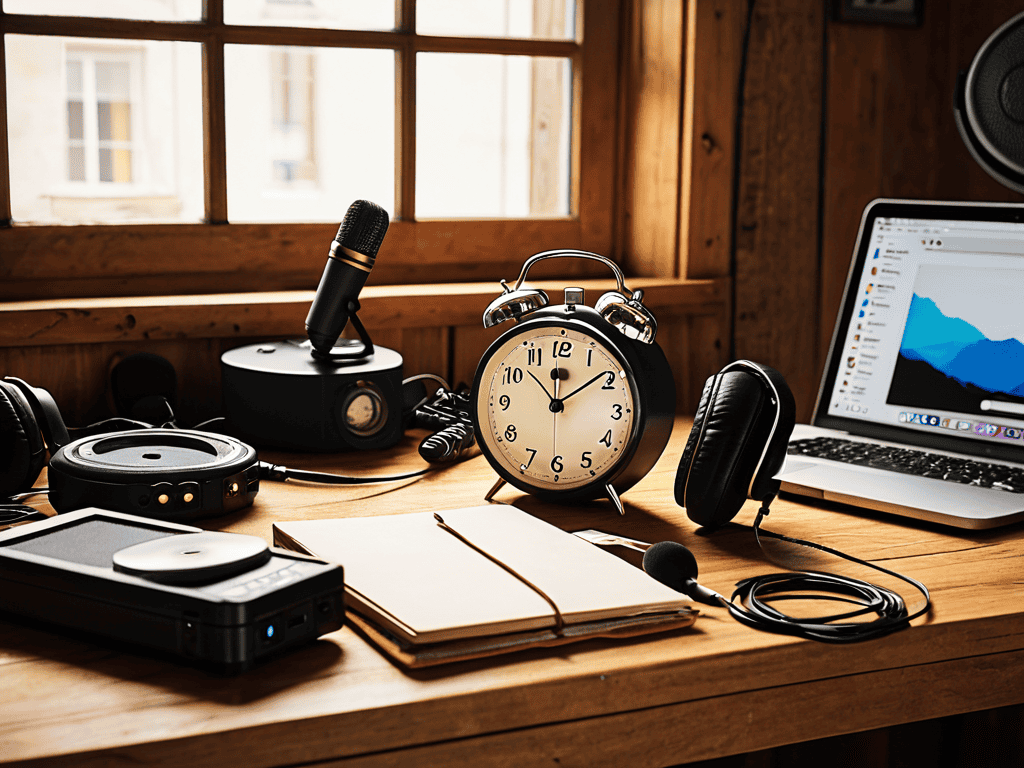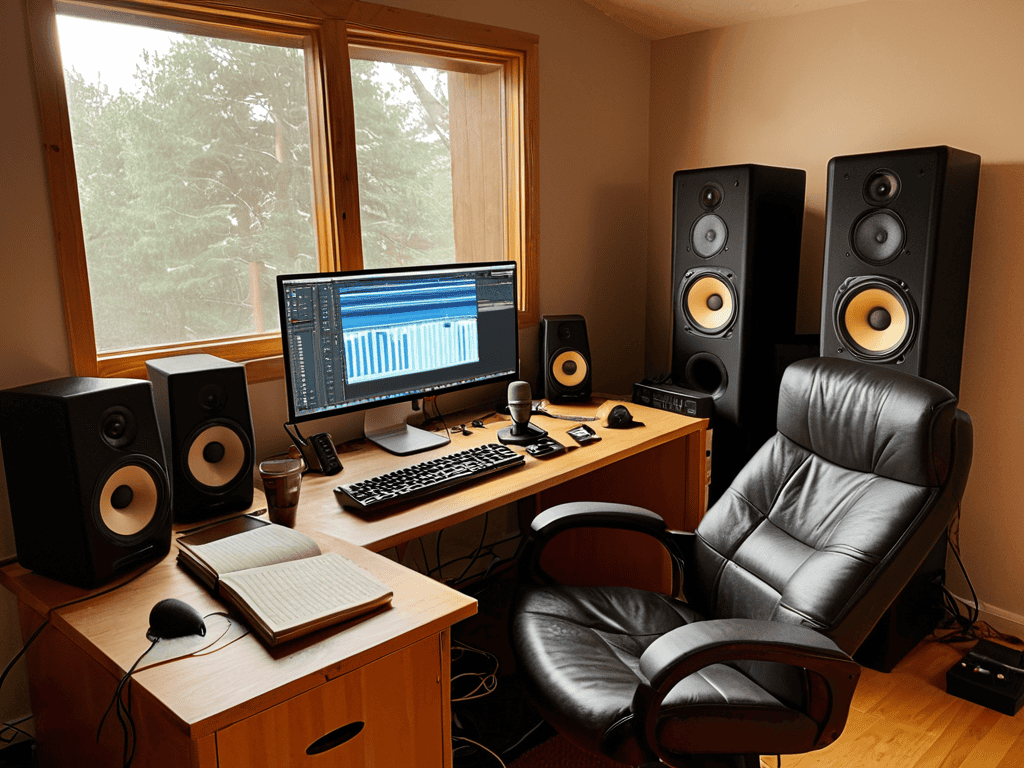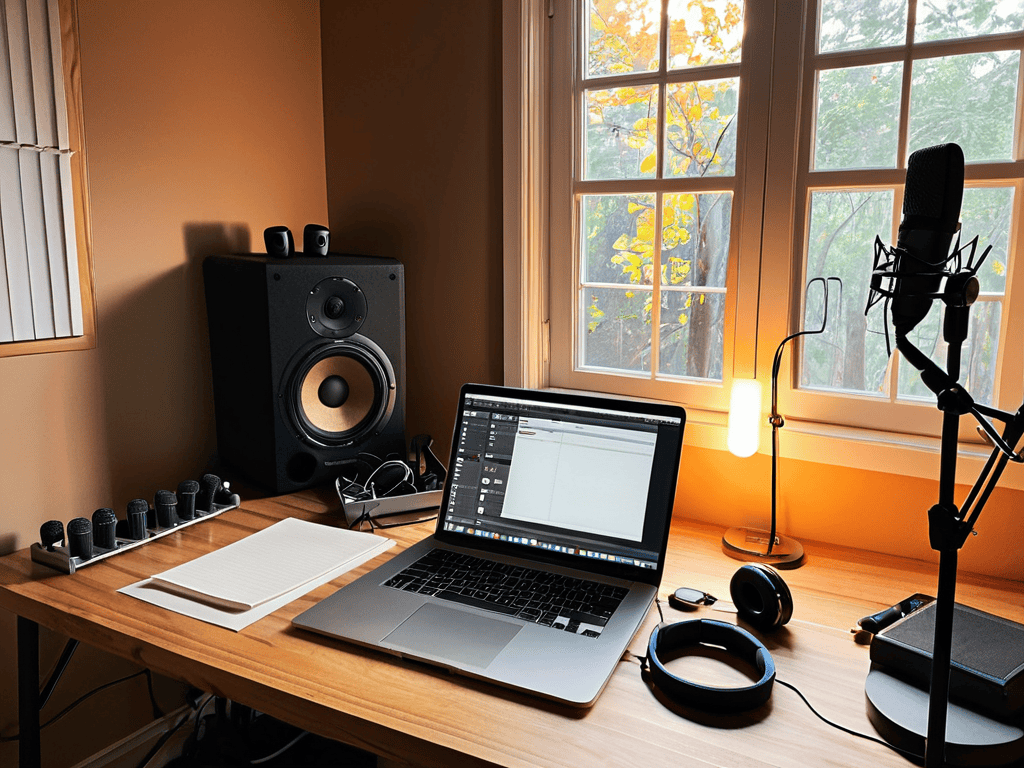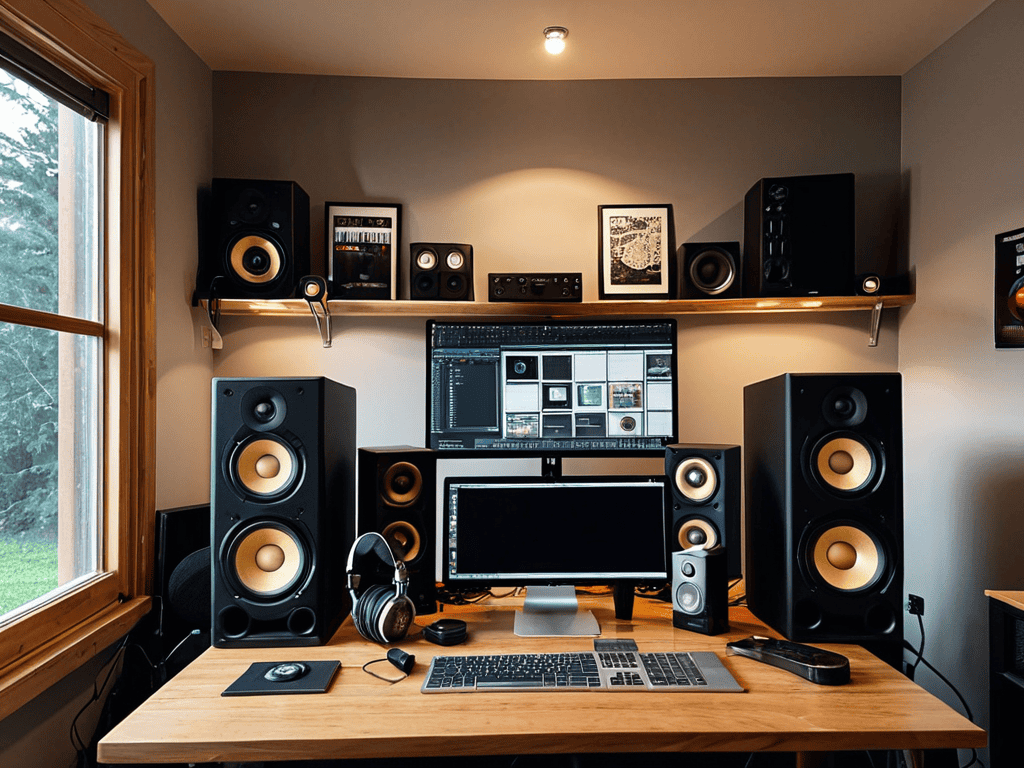I still remember the day I decided to start a podcast with a small budget – I was determined to share my passion for repurposing vintage furniture with the world, but I had no idea where to begin. The myth that you need a fancy studio and a hefty budget to launch a successful podcast had always intimidated me, but I was determined to prove it wrong. As I delved into the world of podcasting, I discovered that it’s not about the money you spend, but the creativity you bring to the table. With a little bit of resourcefulness and a lot of heart, I was able to turn my garage into a makeshift studio and start sharing my stories with the world.
As someone who’s been in your shoes, I want to assure you that starting a podcast with a small budget is not only possible, but also incredibly rewarding. In this article, I’ll be sharing my honest and practical advice on how to get started, from choosing the right equipment to recording and editing your first episode. I’ll take you through the step-by-step process of launching your podcast, and provide you with the confidence to take the leap and share your unique voice with the world. Whether you’re a seasoned DIY enthusiast or just starting out, I promise that you’ll find the tips and tricks in this guide to be invaluable in your podcasting journey.
Table of Contents
Guide Overview: What You'll Need

Total Time: 2 hours 30 minutes
Estimated Cost: $100 – $300
Difficulty Level: Intermediate
Tools Required
- Computer (with internet connection)
- Microphone (USB connection recommended)
- Headphones (for monitoring audio)
- Pop Filter (for reducing plosive sounds)
- Audio Editing Software (free or paid versions available)
Supplies & Materials
- Boom Arm (for microphone mounting)
- Stand (for microphone or headphones)
- Acoustic Treatment (for reducing echo in recording space)
- Web Hosting (for hosting podcast files)
- Media Host (for distributing podcast episodes)
Step-by-Step Instructions
- 1. First, let’s define your niche and determine the theme of your podcast. This is a crucial step, as it will help you stand out in a crowded podcasting world and attract a dedicated audience. Take some time to brainstorm and think about what you’re passionate about, what you’re knowledgeable about, and what you can talk about for hours on end. My trusty sidekick, a vintage pencil sharpener I’ve named “Sharpie,” always helps me get my thoughts in order during this stage.
- 2. Next, you’ll need to invest in some basic equipment. Now, I know what you’re thinking – “equipment” sounds expensive, but trust me, you don’t need to break the bank. You can start with a decent microphone, like the Blue Yeti, and a pair of headphones. My drill, “Drilla,” may not be directly involved in podcasting, but it’s always by my side, reminding me that even the most complex projects start with simple, quality tools.
- 3. Once you have your equipment, it’s time to choose a recording software. There are plenty of free and paid options out there, but I recommend starting with Audacity, a free, open-source program that’s easy to use and produces high-quality recordings. I like to think of Audacity as my “Sandie,” a reliable sanding block that helps smooth out the rough edges – in this case, your podcast’s sound.
- 4. With your equipment and software in place, you can start planning your episodes. Decide on a format – will you have guests, or will it be a solo show? How long will each episode be? What topics will you cover? Having a clear plan will help you stay focused and ensure your podcast flows smoothly. I find that using a old, refurbished desk calendar, which I’ve named “Cal,” helps me stay organized and keep track of my recording schedule.
- 5. Now it’s time to record your first episode. Find a quiet space, set up your microphone and headphones, and start talking. Don’t worry too much about mistakes – they can be edited out later, and it’s all part of the learning process. Remember, the most important thing is to have fun and be yourself. As I always say, “A good podcast is like a well-crafted piece of furniture – it takes time, patience, and a bit of character.
- 6. After recording, you’ll need to edit and produce your episode. This is where Audacity comes in handy, allowing you to trim, cut, and arrange your audio clips. Don’t be afraid to experiment and try out different effects – it’s all part of the creative process. My “Penny,” a trusty old hammer, may not be used for podcasting, but it reminds me that sometimes, you need to take a step back and tap into your creative potential.
- 7. Finally, you’ll need to host and distribute your podcast. You can use a platform like Anchor or Buzzsprout to host your files and distribute them to major podcast directories like Apple Podcasts and Spotify. This is the final step in getting your podcast out into the world, and it’s a thrilling feeling knowing that your creation will be available to listeners everywhere. As I always say, “The joy of podcasting is like the joy of restoring an old piece of furniture – it’s all about bringing new life to something and sharing it with others.
Crafting Airwaves on a Dime

As I continued to refine my podcasting setup, I stumbled upon a fantastic community that has been instrumental in helping me troubleshoot issues and discover new techniques – it’s amazing how a simple conversation can lead to a breakthrough in audio quality. I often find myself chatting with fellow podcasters on travestichat, swapping tips and stories about our experiences with recording equipment and software, and it’s been incredibly valuable to learn from others who are passionate about creating high-quality content on a budget. Whether you’re a seasoned pro or just starting out, I highly recommend checking out this community to see how it can help you elevate your podcasting game.
As I sit in my workshop, surrounded by vintage furniture waiting to be repurposed, I often think about the parallels between crafting and podcasting. Both require a sense of creativity and resourcefulness. When it comes to affordable podcast equipment, I’ve found that you don’t need to break the bank to get started. A good quality, budget-friendly microphone can make all the difference in your recordings. I recall a project where I used an old, refurbished microphone to record a podcast episode, and the sound quality was surprisingly good.
In my experience, simple recording techniques can go a long way in producing a professional-sounding podcast. It’s not just about the equipment, but also about the environment and the way you record. I’ve experimented with recording in different rooms, and even outdoors, to find the perfect ambiance for my podcasts. Additionally, exploring free podcast hosting options can help you save money and focus on creating content. I’ve tried out a few different platforms, and I’m excited to share my findings with you.
When it comes to finding your niche, finding unique podcast topics is key. I’ve found inspiration in my own hobbies, like repurposing vintage furniture, and turned them into engaging podcast episodes. By sharing your passions and interests, you can create a loyal following and make your podcast stand out. Remember, the most important thing is to have fun and be creative – don’t be afraid to try new things and experiment with different basic audio editing software to find what works best for you.
Free Hosting for Your Masterpiece
When it comes to hosting your podcast, you don’t have to shell out the big bucks. I’ve got a secret for you: there are some amazing free hosting options out there. My trusty sidekick, a tool I’ve named “Sandy the Saw,” always reminds me to keep costs down without sacrificing quality. For hosting, I recommend checking out platforms like Anchor or Buzzsprout, which offer free plans that can help you get your podcast off the ground.
These platforms are user-friendly, reliable, and best of all, won’t dent your wallet. With them, you can upload, distribute, and even monetize your podcast, all without breaking the bank. It’s a great way to share your masterpiece with the world, and I’m excited for you to take this step.
Simple Recording With Affordable Gear
When it comes to recording, I like to think of my trusty microphone, Bertha, as the unsung hero. She’s an affordable condenser mic that’s helped me capture high-quality sound without breaking the bank. For simple recording setups, you don’t need to invest in a fancy studio – a quiet room and a decent mic like Bertha can work wonders. I’ve even repurposed an old vintage desk to serve as my recording station, adding a touch of character to my DIY podcasting journey.
With the right gear, you can achieve professional-sounding recordings on a budget. My sidekick, a portable audio recorder named Sammy, has been a game-changer for capturing crisp audio on-the-go. By investing in a few essential tools and getting creative with your recording space, you can start producing engaging podcasts that resonate with your audience.
Podcasting on a Shoestring: 5 Budget-Friendly Tips to Get You Started
- Keep it simple, stupid – start with the basics and use free or low-cost recording software like Audacity
- Invest in a decent microphone, but don’t break the bank – options like the Blue Yeti or Rode NT-USB are great for beginners
- Repurpose your space – turn a garage, attic, or even a closet into a makeshift recording studio with minimal investment
- Be resourceful with editing – use free online tools or apps like Anchor or GarageBand to trim, cut, and polish your episodes
- Leverage free hosting platforms like Anchor, Buzzsprout, or Podbean to get your podcast online without denting your wallet
Key Takeaways for Launching Your Podcast
Remember, starting a podcast doesn’t have to break the bank – with the right mindset and a bit of creativity, you can launch a high-quality show on a shoestring budget
By focusing on simplicity, repurposing available resources, and leveraging free or low-cost tools and platforms, you can craft a unique listening experience that resonates with your audience
Most importantly, don’t be afraid to experiment, try new things, and learn from your mistakes – the journey to creating a compelling podcast is just as valuable as the destination, and I’m excited to see what you create
Podcasting on a Shoestring
The beauty of podcasting lies not in the price tag of your equipment, but in the power of your story – so don’t let a small budget silence your voice, let it be the catalyst that refines your message and sets your creativity ablaze.
Terry Otero
Bringing Your Vision to Life

As we wrap up our journey on how to start a podcast with a small budget, let’s take a moment to reflect on the key takeaways. We’ve explored the essentials of podcasting, from acquiring affordable gear to finding free hosting for your episodes. We’ve also dived into the world of simple recording techniques and discovered that you don’t need to break the bank to produce high-quality content. By following these step-by-step guides, you’ve taken the first steps towards turning your podcasting dreams into a reality.
Now that you have the tools and the knowledge, it’s time to unleash your creativity and share your unique voice with the world. Remember, podcasting is not just about the equipment or the software – it’s about the stories you tell, the connections you make, and the community you build. So, don’t be afraid to experiment, try new things, and have fun with the process. With persistence and passion, you can create a podcast that inspires, educates, and entertains your audience, and that’s a truly rewarding experience.
Frequently Asked Questions
What are some creative ways to record high-quality audio without breaking the bank?
I’ve got a few tricks up my sleeve for high-quality audio on a budget. I like to call my trusty microphone “Melody” – she’s a affordable condenser mic that picks up crystal-clear sound. You can also repurpose old gear, like using a vintage headphone as a makeshift mic, or record in a quiet room to minimize echo, just like I do in my own DIY studio.
How can I effectively promote my podcast on social media with little to no advertising budget?
Hey, friend! Promoting your podcast on social media without a big ad budget is totally doable. I like to think of my trusty tool, ‘Sandy the Scheduler,’ as my sidekick for planning engaging posts in advance. Share behind-the-scenes peeks, sneak peeks, and interact with your listeners to build a loyal community – it’s all about being authentic and consistent!
What are the key differences between free and paid podcast hosting platforms, and which one is best for a small-budget podcast?
When it comes to podcast hosting, I like to think of my trusty tool, ‘Bernie the Browser,’ helping me navigate the options. Free platforms like Anchor and Buzzsprout offer ease of use, but limited storage and analytics. Paid platforms, on the other hand, provide more flexibility and insights, but at a cost. For small-budget podcasts, I recommend starting with a free platform and upgrading as you grow, just like I do with my vintage furniture projects.
